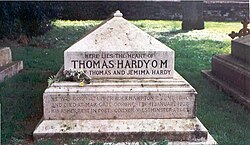
Heart-burial is a type of burial in which the heart is interred apart from the body. In medieval Europe heart-burial was fairly common among the higher echelons of society, as was the parallel practice of the separate burial of entrails or wider viscera: examples can be traced back to the beginning of the twelfth century. [1] Evisceration was carried out as part of normal embalming practices, and, where a person had died too far from home to make full body transport practical without infection, it was often more convenient for the heart or entrails to be carried home as token representations of the deceased. [2] The motivation subsequently became the opportunity to bury and memorialise an individual in more than one location.
